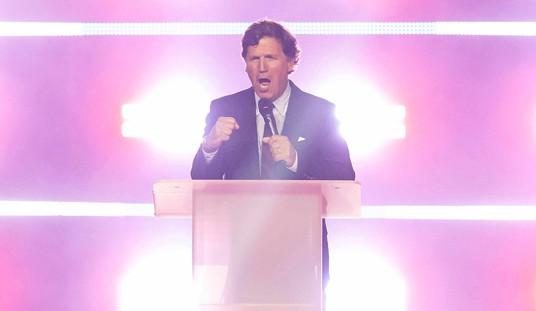The secret wait lists may be gone, but not the reason for them. The Phoenix VA system became the epicenter of a nationwide scandal of neglect, as dozens or perhaps hundreds of veterans died while being denied care in order to make the VA system’s bureaucrats feign competence — and collect bonuses. A new report shows long wait times remain, and whistleblowers accuse the VA of dragging their feet on hiring physicians to alleviate the backlog:
More than a year after we first learned of problems at the Phoenix VA Hospital — they still have not been fixed. A new government report describes long waits for veterans seeking treatment.
Whistleblowers charge the hospital is missing something essential: enough doctors. …
Whistleblower Dr. Sam Foote maintains that at least 40 veterans died in Phoenix since April 2013. He said more than two years later, the problems still aren’t fixed.
The report did not blame the wait times for the deaths, but it did call for changes in how the Phoenix VA schedules appointments.
“A band-aid has been put on this, and therefore everything’s okay? Everything’s not okay,” said Dr. Foote. “They still don’t have enough physicians and providers to provide medical care.”
Two months ago, an IG report slammed the Phoenix VA for a number of failures relating to wait times and care itself in its urological discipline. The problem became worse when non-VA physicians referred patients into the system, thanks to a breakdown of coordination:
OHI launched this separate review when it became clear that the Urology clinic experienced extreme staffing shortages that potentially impacted thousands of patients. As the review continued and more complex cases were revealed, we also recognized the need for a more intense specialty level evaluation.
We determined that PVAHCS leaders did not have a plan to provide urological services during significant unexpected provider shortages in the Urology Service. In addition, PVAHCS leaders did not promptly respond to the staffing crisis, which contributed to many patients being “lost to follow-up” and staff frustration due to lack of direction.
We reviewed 3,321 electronic health records (EHRs) of patients who were referred to PVAHCS Urology. We determined that 1,484 (45 percent) experienced delays in getting new evaluations or follow-up appointments within the PVAHCS Urology Service or through Non-VA Care Coordination (NVCC). We also determined that in 759 (23 percent) of the records reviewed, non-VA providers’ clinical documents were not available for PVAHCS providers to review in a timely manner. We concluded that referring providers may not have addressed potentially important recommendations and follow-up because they did not have access to these non-VA clinical records. This finding suggested that PVAHCS did not have accurate data on the clinical status of the patients who were referred for clinical care. Even in the event that further recommendations were not needed, or there were no critical findings identified, this disconnect between the referring provider and the non-VA specialist compromised the overall management of the patient. We have provided the Veterans Health Administration (VHA) with the 759 names of the patients with incomplete records, and once VHA receives the information from the non-VA providers and uploads all the necessary clinical documents into the EHRs, we will complete and publish that review.
We also concluded that PVAHCS Urology Service and NVCC staff did not provide care or ensure that timely urological services were provided to patients needing care. We identified 10 patients who experienced significant delays, which may have affected their clinical outcome in some instances. Such delays placed patients at unnecessary risk for adverse outcomes. In addition, we found that the quality of non-urological care in two cases was not acceptable, which placed these patients at unnecessary risk for harm.
In any system, a patient or two might drop through the cracks of a system. In this case, almost a quarter of the patients in the care of the Phoenix VA’s Urology group fall through the cracks, and almost half of them experience significant delays. If the government saw this kind of performance at a private care network, the Justice Department would already be filing suit. And while this probe was limited to the Urology department, it’s an easy bet that the same issues run system-wide at the Phoenix VA.
One might think that the VA would be smart enough to address the acute issues at the center of the scandal immediately. Perhaps that expectation might be especially strong given that the VA’s new leadership has that role because of the exposure of the problems in that particular network. Yet it seems that more than 19 months later, the VA still hasn’t acted to get enough doctors into the Phoenix VA to deal with the ongoing demand, let alone the backlog. That failure is mighty, mighty curious, and should be to Congress as well.
Our veterans deserve better. Most importantly, they deserve a choice — and should have the portability to seek medical care from private providers without getting a bureaucrat’s approval first. If the VA can’t get its act together by now, Congress should change the law to force the VA to pay the bills for private providers and let the men and women who served this nation find the care they need while it still does them some good.
Update: No, this is not a funding issue, as I noted at the time the scandal broke. No Cabinet agency saw its budget grow more during the Obama administration on a percentage basis than the Department of Veterans Affairs, and only Defense grew more on a raw-dollar basis:
OMB historical data on budget outlays by department are easily available at the White House website, and the spreadsheet tells a very interesting story. Since 9/11, the VA budget has increased by 235%, from FY2001’s $45 billion annual budget to FY2014’s $150.7 billion. On a percentage basis, the only Cabinet agencies that had larger budget increases over that arc have been State (271%) and Homeland Security (245%), the latter of which barely existed at the start of that period. In the Bush era, comparing the final budget with his signature (FY08) to the final Clinton budget (FY01), VA spending rose 88.3% to $84.7 billion. Defense spending rose 104% in the same period.
Barack Obama ran in 2007-8 on failures at the VA, promising more resources and better management. In comparison to that final Bush budget — don’t forget that Obama signed the FY2009 budget in March 2009 with the omnibus spending bill after a Democrat-controlled Congress refused to deal with Bush — VA spending has risen dramatically as well. The annual budget rose 78% in six budget cycles, with double-digit increases in four of the six years — while Defense spending was flat. No other Cabinet agency had a larger budget increase by percentage during Obama’s tenure. The closest was Agriculture (64%), followed by State (59%, which tends to discredit the canard about the Benghazi failure being caused by a lack of resources). Only HHS had a larger annual budget increase in terms of dollars spent, but it amounts to a 37% increase in spending from the FY2008 baseline. The amount of increase in the VA’s budget in the Obama era, $65.9 billion, exceeds the entire VA budget in the FY2004 budget.
This is a failure in both leadership and in design. The VA’s single-payer system and that model’s lack of accountability are directly responsible for the failures of the system, and the Obama administration’s leadership has been responsible for the mismanagement of its resources and the corruption that has been allowed to fester for so long. It is not a failure to fund the system that has led to this incompetence, and worse. And it serves as a reminder why a government-run single-payer system would be a disaster for the rest of us, too.








Join the conversation as a VIP Member